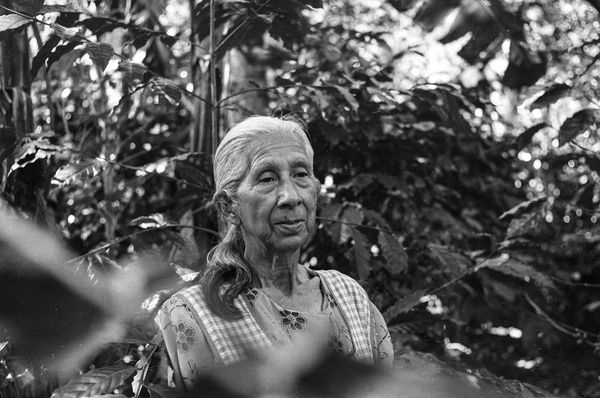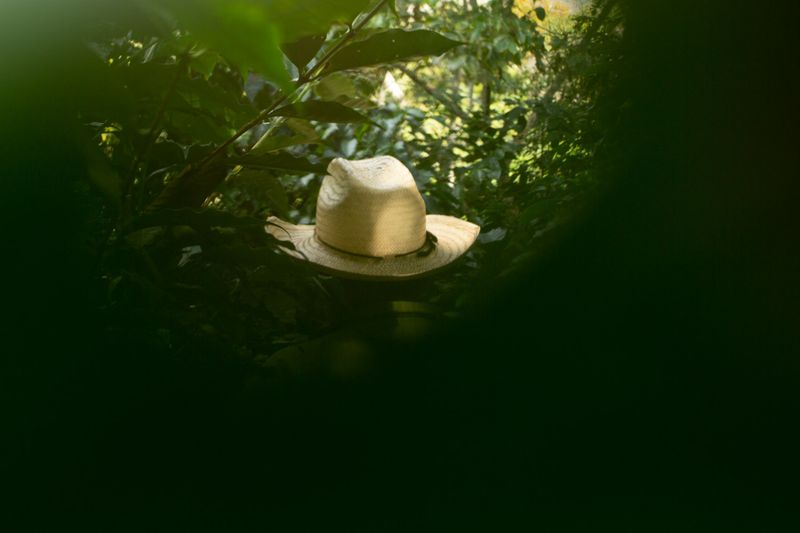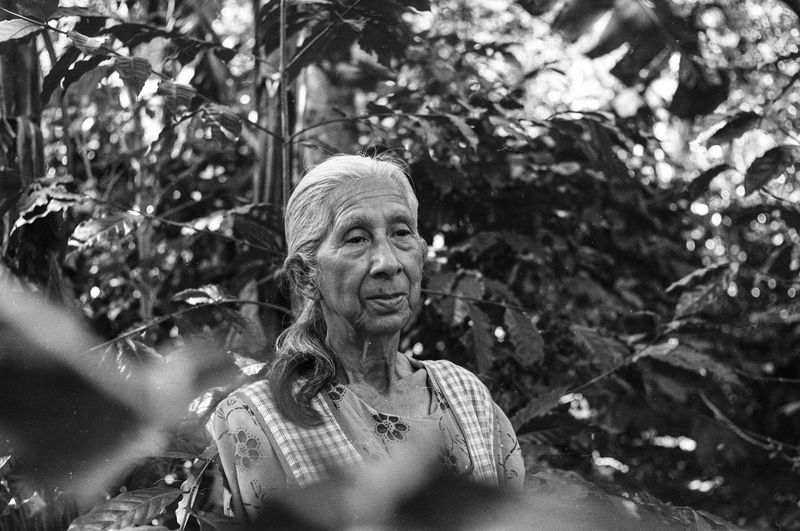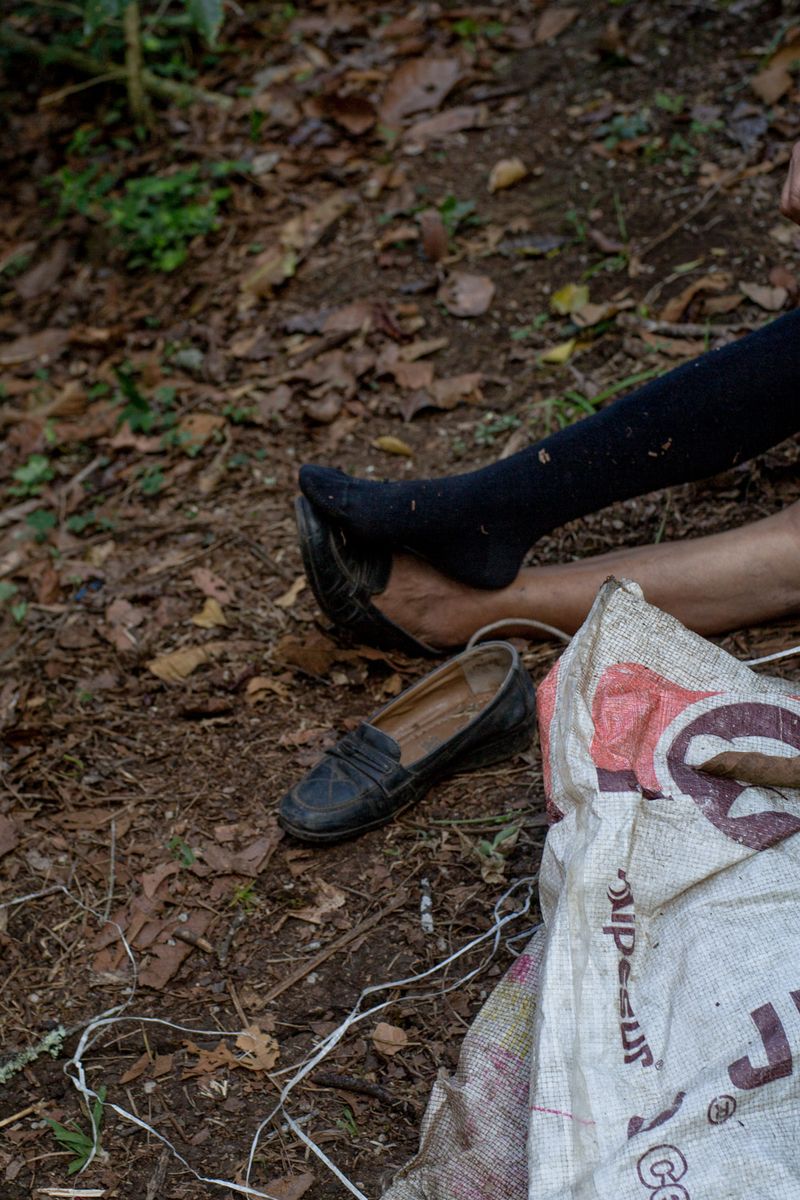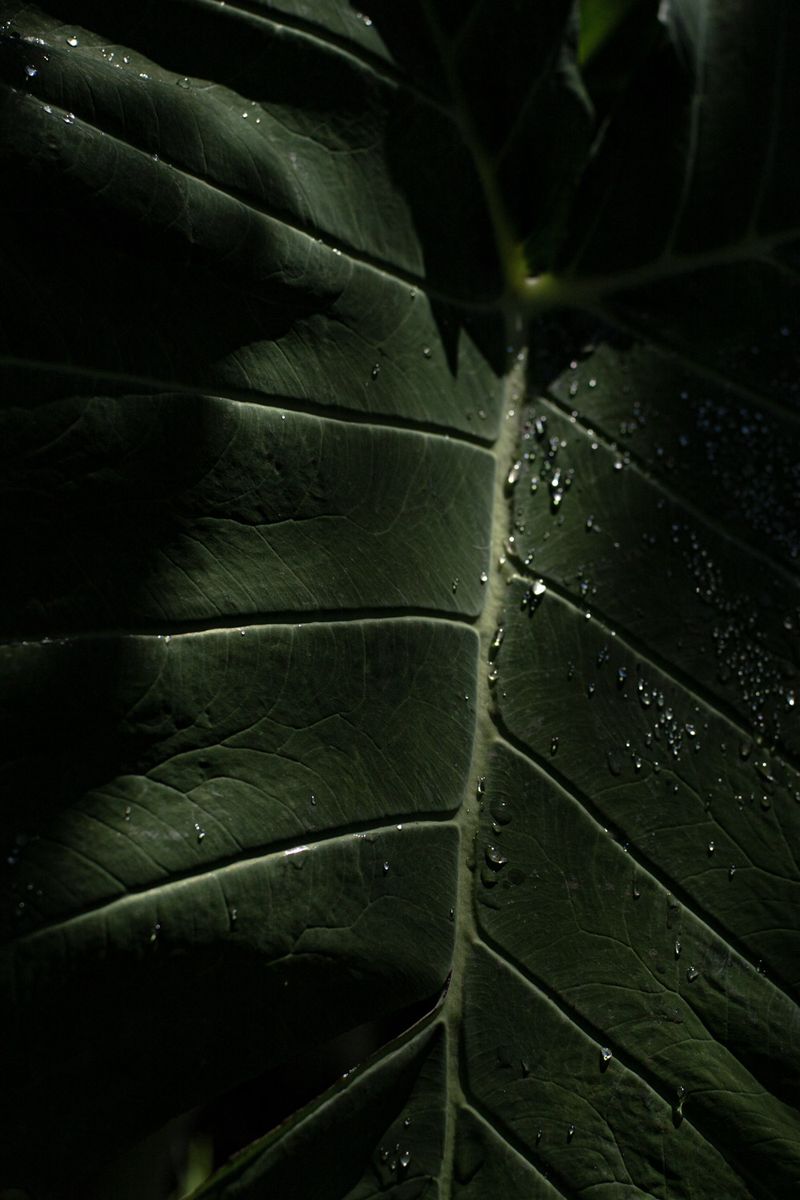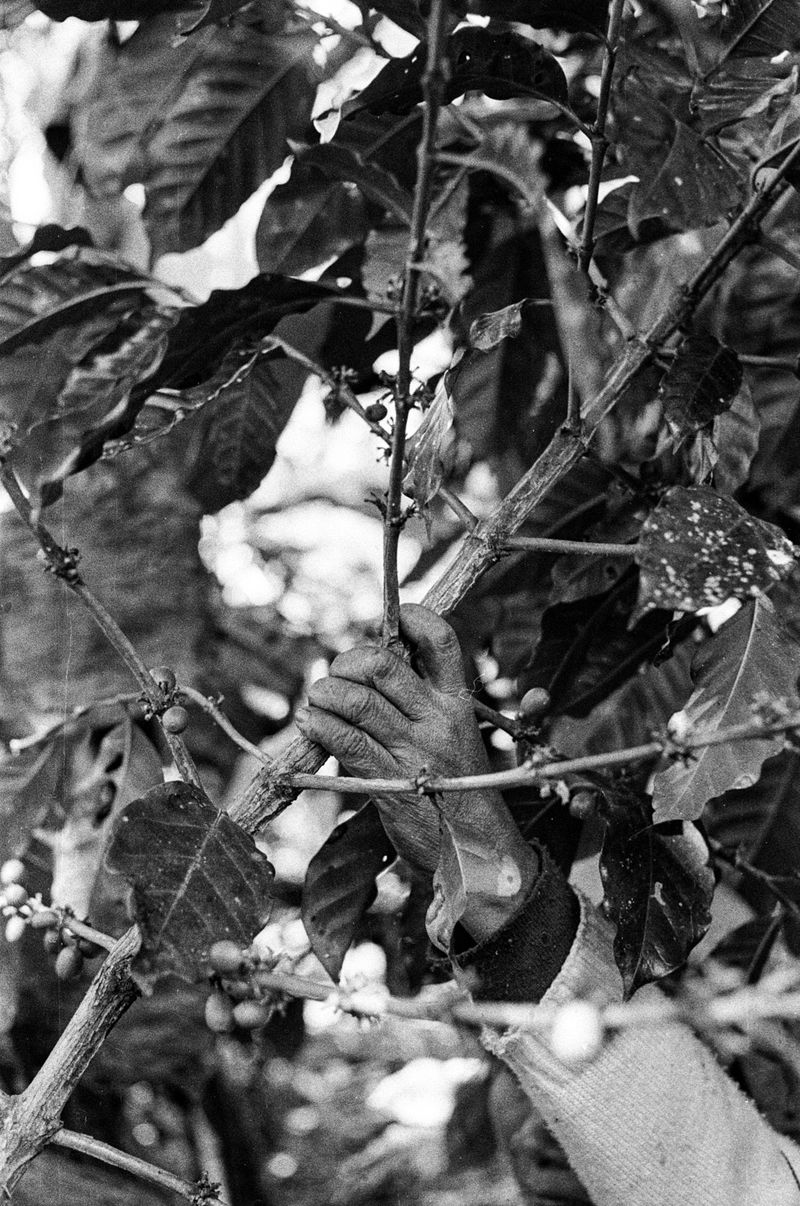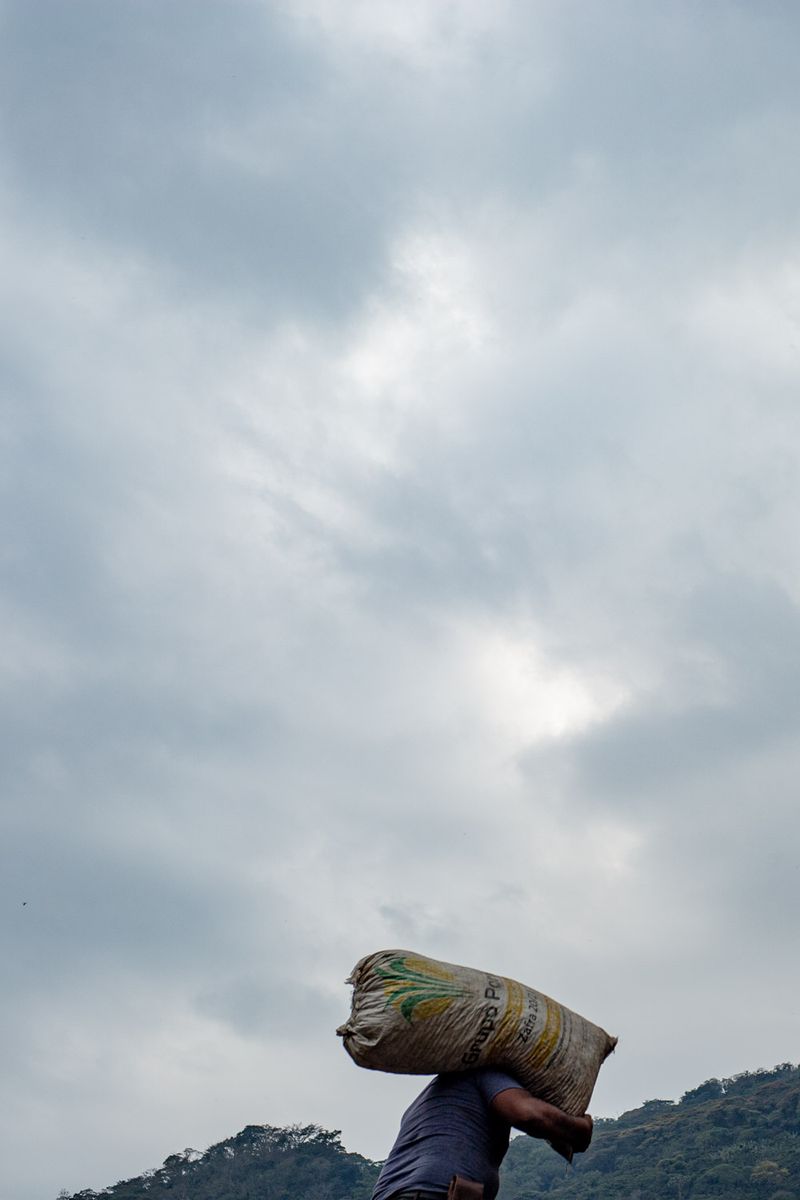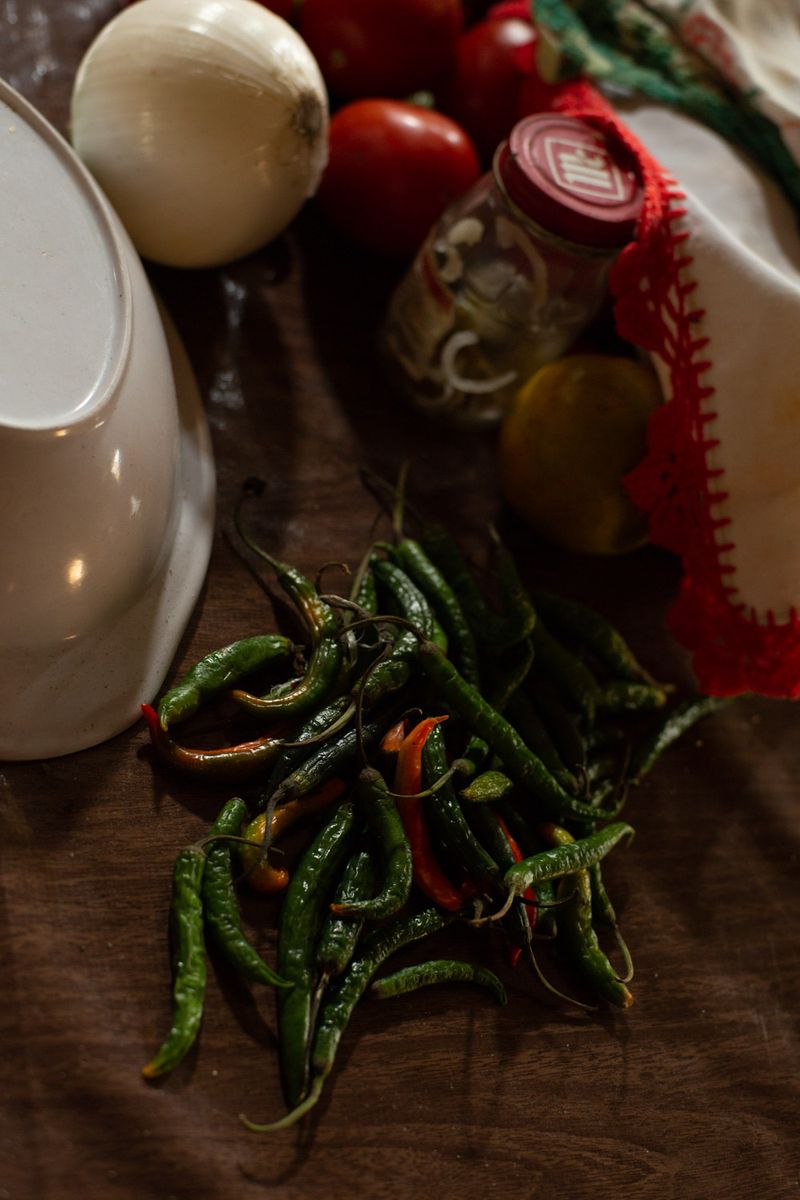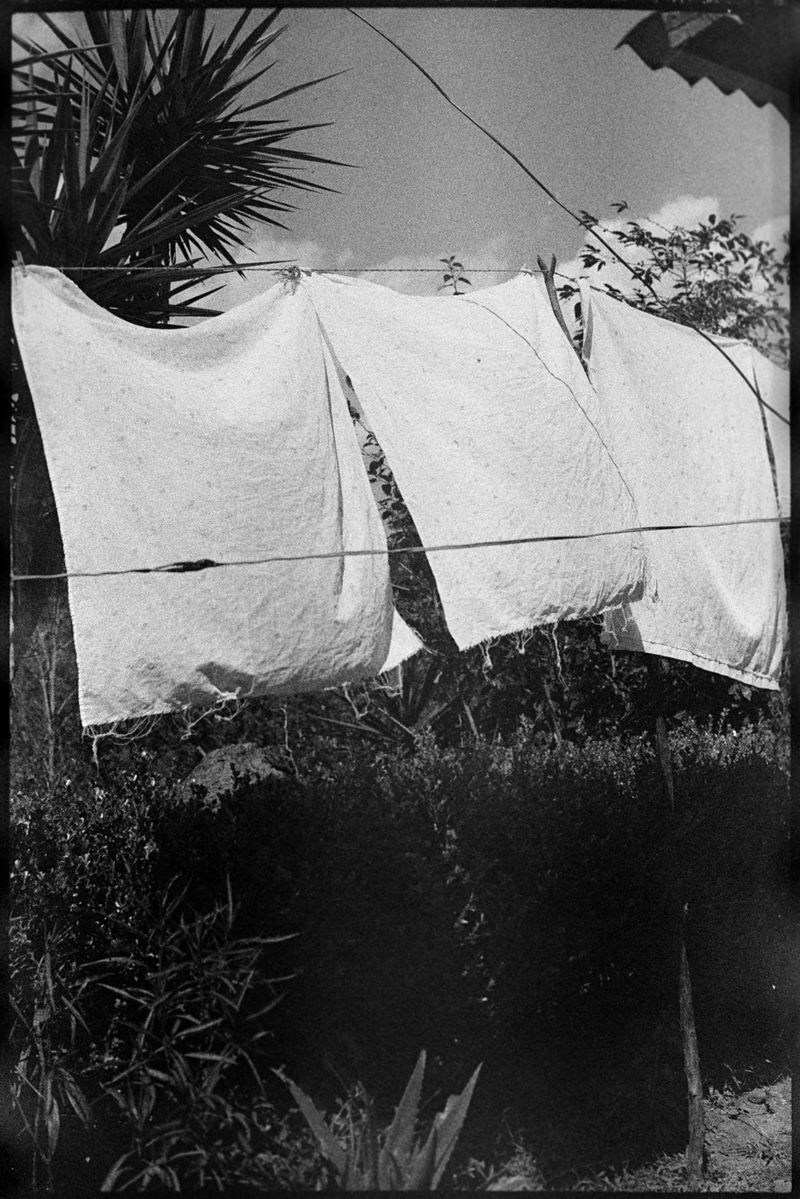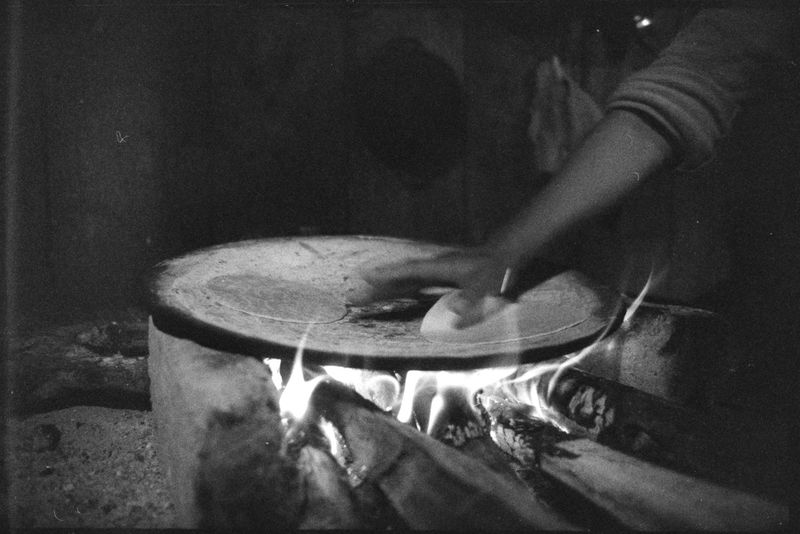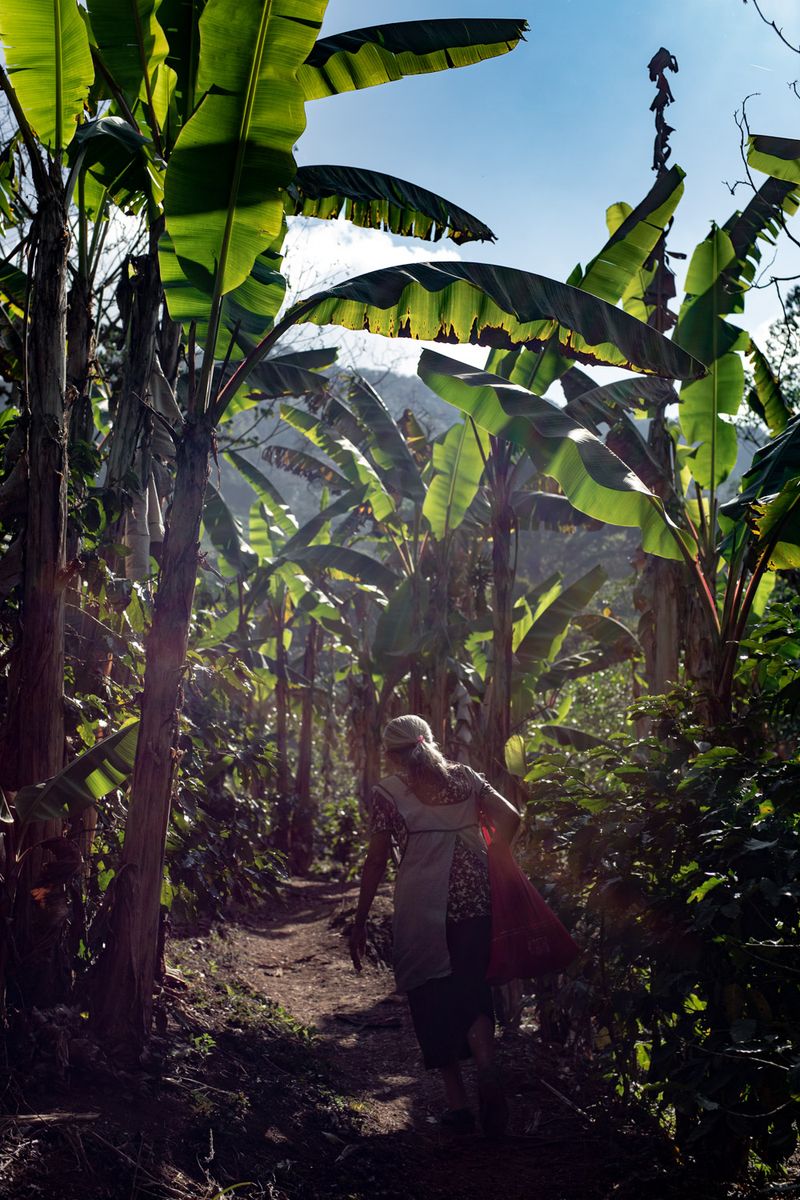Purple Washed Beans?
-
Dates2022 - Ongoing
-
Author
- Location Mexico, Mexico
Women have been an integral part of agricultural life for centuries. When they don’t go to the fields, they run the house so that the business can function. Yet, I have come across more than one pack of coffee bearing the name “women’s coffee” as if it was something new or remarkable, an eccentricity, even. The project thus started with a desire to understand what that appellation actually meant – were women really in charge? Were they independent, did they own their land, did they have decisional power? Or was it simply good old purple washing?
This spring, I went to Mexico, one of the top 10 coffee-producing countries in the world, where 11 women are killed every day, and spent time with various coffee producers in the state of Veracruz (one of the most dangerous in the country). The images you see in the portfolio are a mix of digital (color) and film (black and white), because the film was developed with a caffenol process using coffee purchased from the proper producers (caffenol is normally made with commercial instant coffee) which allows me to bring the story full circle, but also gives the images a special quality, as the negatives are bathed in the greasy, grainy, liquid that is coffee… And it’s a great way to give another life to the coffee from the families who give me their time.
Doña Tere lives in El Bajío, near Córdoba. Aged 72, she seems frail but is strong enough to lift buckets of coffee beans. She grows coffee on her own land –inherited from her father. She and her workers pick the cherries, which she then pulps, dries, and sometimes toasts. Her husband and sons help her, but only Doña Tere and her daughter-in-law, Ana Rosa, who also owns her parcel, have studied to improve their coffee production.
Three hours away, in the mountains of Zongolica, live Mariana and her family. Mariana grew up in Córdoba, but when she fell in love with Josias, she uprooted her life and became a housewife while he produced coffee. She cooks, does laundry, and takes care of their three daughters. She rarely has a moment to herself. The coffee Josias produces isn’t a ‘women’s coffee’, and why would it? He views himself as the sole provider for the family. But could he focus on coffee if Mariana wasn’t tending to the house and his every need?
My proposal is to tell the story of women in such a patriarchal field as that of agriculture, through a crop that spans all the consumption strata, from terrible instant coffee to beans worth several hundred euros a kilo. That work will continue at a deeper level through this grant, as I will be able to spend more time with these two families, and visit other coffee-producing states (Chiapas and Oaxaca mainly). Down the line I will expand this work to Uganda and Honduras, chosen because they are at the intersection of being top-producing countries and facing deep-rooted issues of gender violence and other issues such as healthcare specifically affecting women, including women who are members of the queer community. The end-goal being to approach these political issues, as well as economic and environmental questions through the prism of coffee-produced photographs reporting on coffee production.


